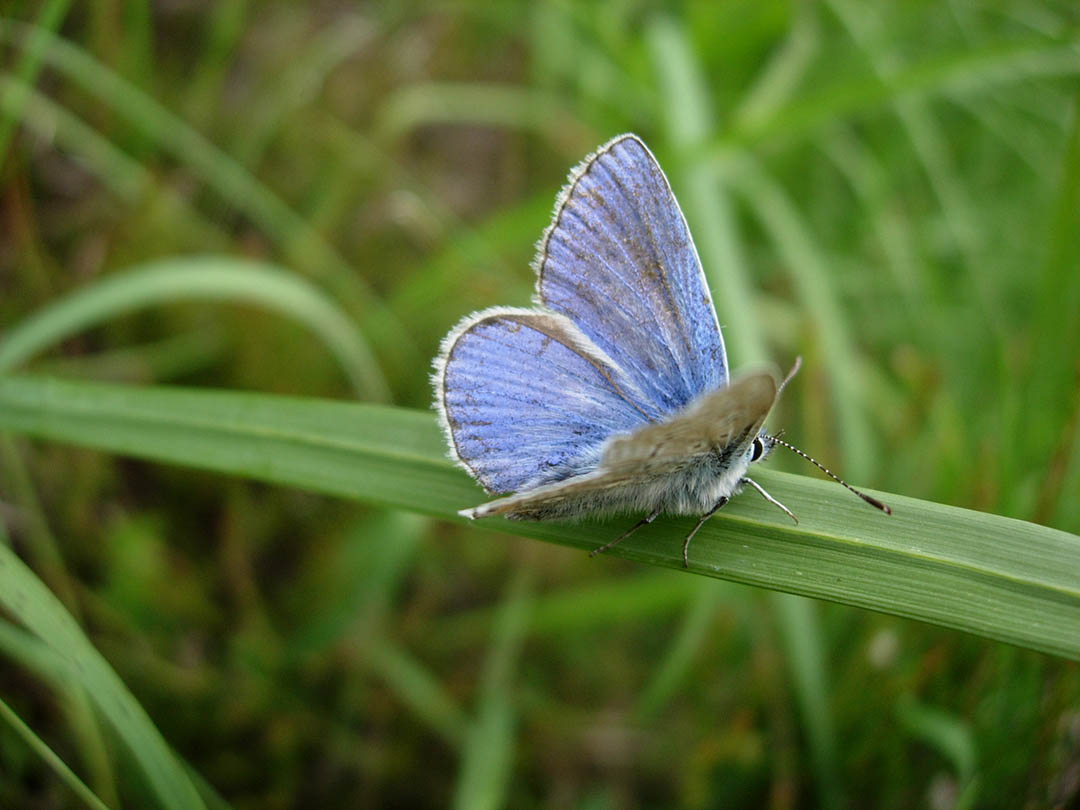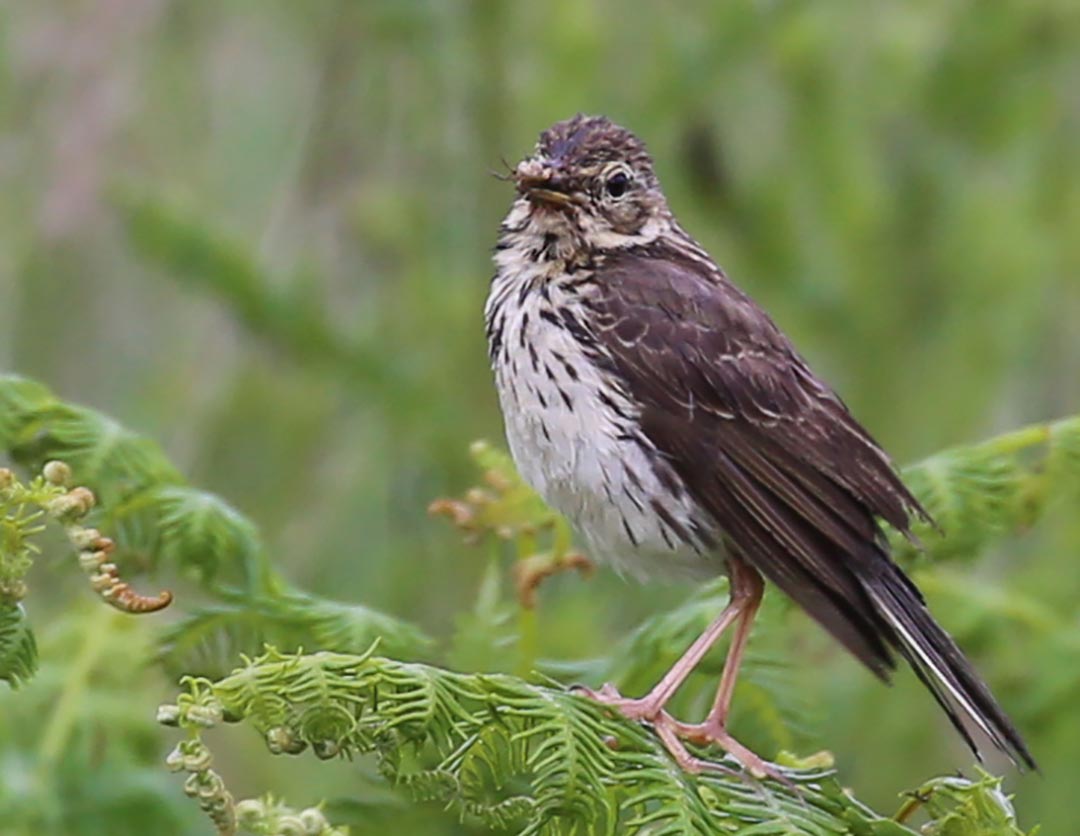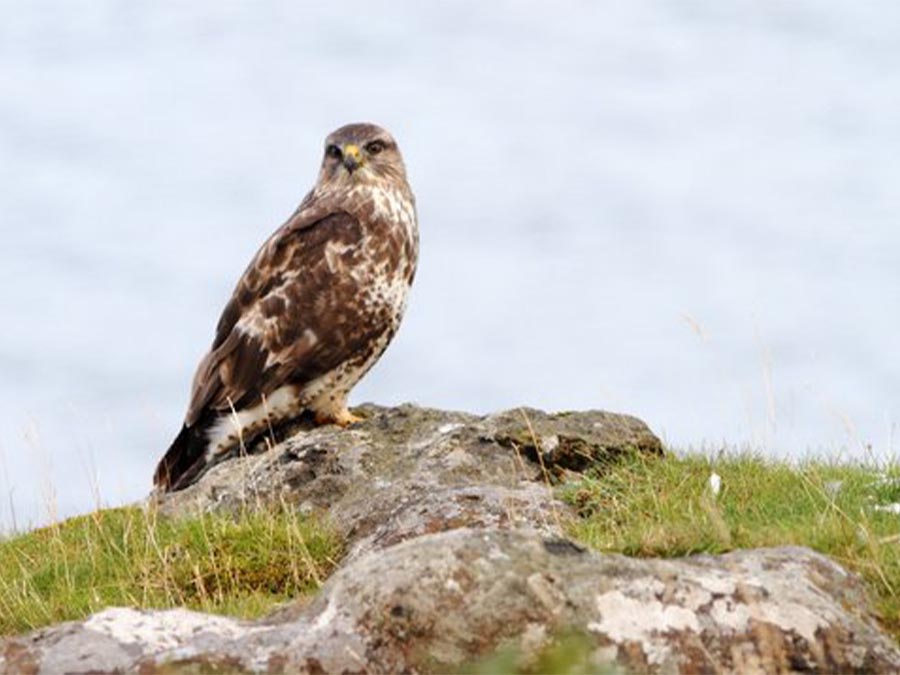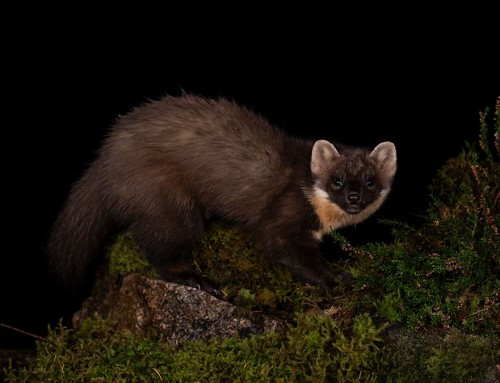July is the height of summer and this year the weather has been blissfully warm with just the odd damp day.
This weather is well suited for our butterflies; they simply do nothing without the warmth of the sunshine. By July many of our butterfly species have come to the end of their flight period, or will do during this month. Still on the wing in July were meadow browns, small and large Heath, common blues, small pearl-bordered fritillaries and dark green fritillaries. Others that appear around mid-month include our most abundant butterfly, the scotch argus, a very dark brown almost black moorland butterfly.
It’s a challenge driving the high roads through Morvern at this time of the year, as these butterflies have a tendency to criss-cross the road and it’s a job trying to avoid them.
A very special butterfly comes onto the wing in July, the purple hairstreak, a very elusive and easily overlooked species that spends most of its life high up in the canopies of oak trees. A good place to see them is in the oaks along the Black Glen gorge. Keep your eye on the oak crowns and sunny sides of them, and watch for them taking short flights out and back again during warm sunny days, and especially during balmy evenings.
Here they are on the northern edge of their range, and when discovered here in 2006 it was a record for this area and for the Highlands but they are now spreading further north.
Another special butterfly that was good to see again after not seeing them for several years was the lovely grayling. They frequent rocky places, along coasts, and high up around the craggy south facing tops of hills. When they land on rocks, they never settle with their wings open, instead they close them and tilt them towards the sun, leaning flat against the rocks, and they have amazingly cryptic camouflaging, and their colours and patterns match the colours of the rocks and lichens that grow on them.
By the end of July, the hills are quiet, it’s a short season this far north. Golden plover, birds that breed on the moors and high ground, will be gathering in pre autumn flocks on high tops, made up of families of adults and this year’s juveniles. They will soon leave and head to lower fields and then south.
Greenshank, a scare elegant wader that breeds around upland lochans, will have moved to larger bodies of water lower down with their young, and will move to sea lochs such as Loch Aline and Loch Teacuis where some will remain all winter.
There will still be families of wheatear around on the hills, summer visitors, but they too will soon start to move south. Pipits will be feeding second broods, and soon big numbers of these abundant little upland birds will be heading south and passing through lowland fields. Skylarks too. After all these young birds will be birds of prey, also feeding their own young. Sparrowhawks are often in about our gardens, but they also fly up to the hills where they know there are lots of birds to hunt, all those young pipits.
Young buzzards by the end of the month are on the wing or will soon be, always vocal, calling hungrily for food. Young cuckoos can be seen in late July, the adult cuckoos will have gone already.
Our woods too go quiet, even as early as before the end of June. All those singing spring birds, residents and summer migrants, just stop singing, no need any more to sing, territories were claimed and held, mates were sung for and pair bonds were formed, and families have been raised. The rest of the summer the birds will be feeding up for the winter and or for their long migrations south to warmer climes. You can spend hours in a wood in the summer and not hear a bird, but they are there.
The young of mammals such as pine martin, otter, fox and badger will all be growing too, maturing, venturing out and further from their dens, holts and setts, but not too far yet, and mostly it will be all about play. Young red deer will be getting bigger, a time of plenty for them.
July is a month of summer fullness, of growing, maturing, and learning. Over the coming weeks many young birds and mammals will have to find their own way as they become independent. Young hunters and the young that they hunt find out who is who, how to hunt, how to evade hunters. Most butterflies and dragonflies will have done their thing, ensuring that they appear again next year. Summer flowers will be going to seed. Fruits and berries will be ripening. Autumn is just around the corner.
Stephen Hardy ranger on the Rahoy hills nature reserve.










